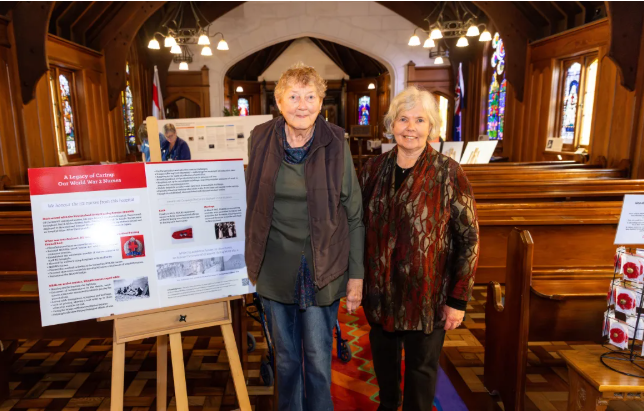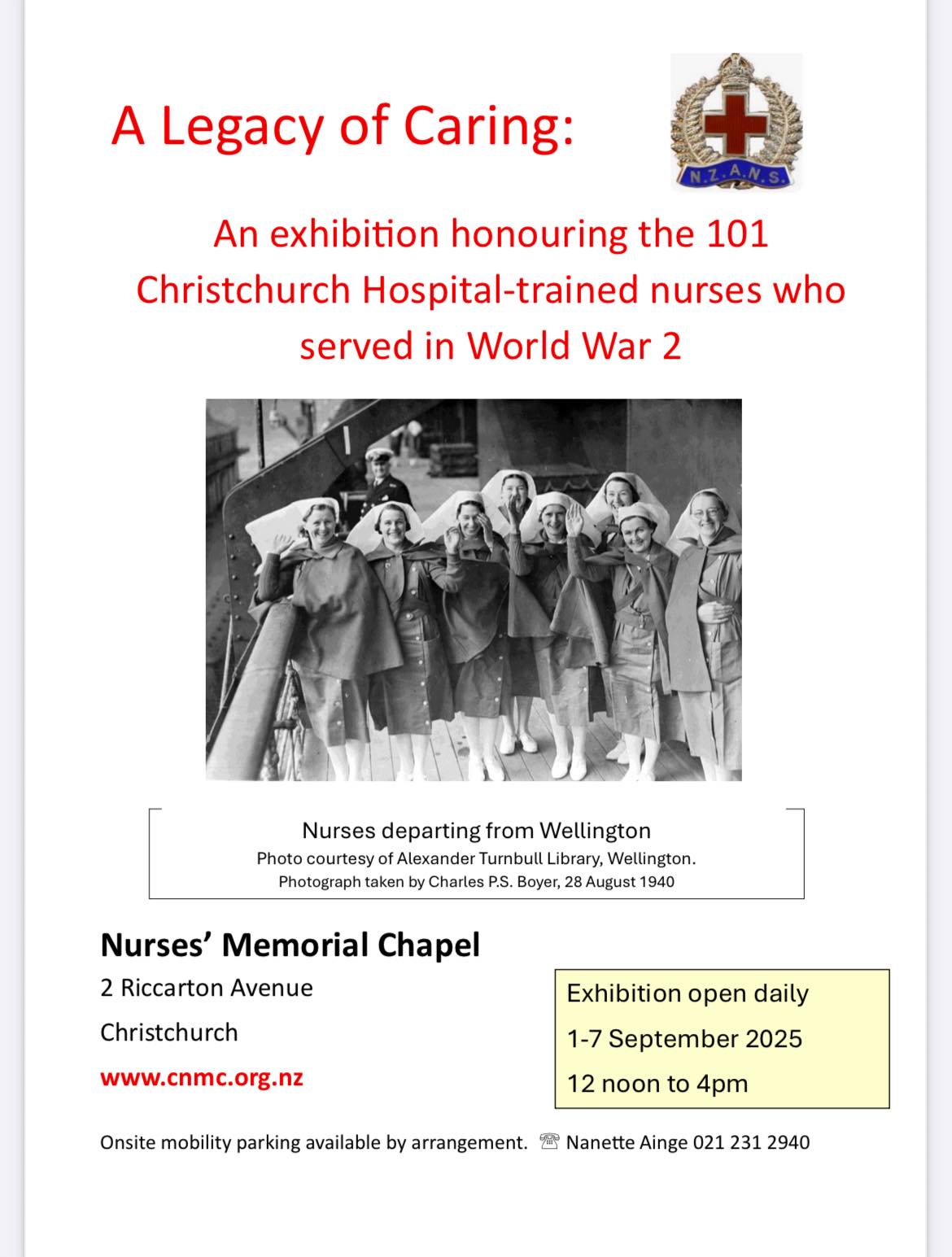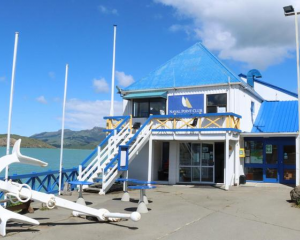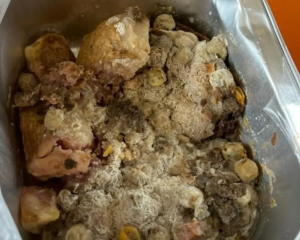
The exhibition is being held in the historic Nurses' Memorial Chapel at Christchurch Hospital.
It includes images and artefacts with the central piece being a folder that pulls together profiles on the 101 Christchurch nurses.
Andrea Grieve, a member of the chapel's museum sub-committee, spent several years compiling a profile on each of the nurses who trained at Christchurch Hospital and served in WW2.
Grieve said little information has been gathered about the individual women who served in WW2 and she felt it was important their stories weren't lost.
She wants to acknowledge the amazing work they did during the war.
"Just completely out of their comfort zone, coming from a well-equipped hospital to facilities with a dirt floor," said Grieve.
"They occupied an old tuberculosis hospital somewhere and had to disinfect it from roof to floor.
"Just amazing, the deprivation and injuries they coped with."
The nurses served in a range of countries, including Egypt, Italy and later in Japan as part of JForce.

"Quita O'Cinidi was on duty in a theatre in Egypt when they brought in Major Major, a white bull terrier who was a war mascot for the New Zealand Infantry.
"He had a shrapnel wound in his rump. He was operated on in theatre and had it removed.
"I believe it was because of this she was so impressed with the dog that later bull terriers became her life.
"She bred and showed bull terriers. She became a world authority on bull terriers."
Some of the nurses also tended to the wounds of those injured in the 1943 Bari air raid in Italy.
"The Luftwaffe bombed the Bari Harbour which was full of ships and there was an American ship which was storing Mustard gas, which nobody knew about," said Grieve.
"So there were a lot of injuries but they didn't know what they were.
"They could have done preventative stuff but a lot of sailors died, and a lot of local people died."

The mustard gas on board a cargo ship was covered up and denied until US records were declassified in 1959. But little was known about it until 1967.
Museum sub-committee member Jennie Hamilton said the exhibition was developed after they saw how much work Andrea had put into developing the profiles.
"The committee decided the exhibition would be a good way to pull all the hard work together, and put it in a wider context."
Grieve said the profiles are a living document. She would love to add in facts or new people as new information becomes available.
- The exhibition is on at the Nurses' Memorial Chapel at Christchurch Hospital until Sunday, September 7. The profiles will be digitalised and available on the chapel's website soon.














